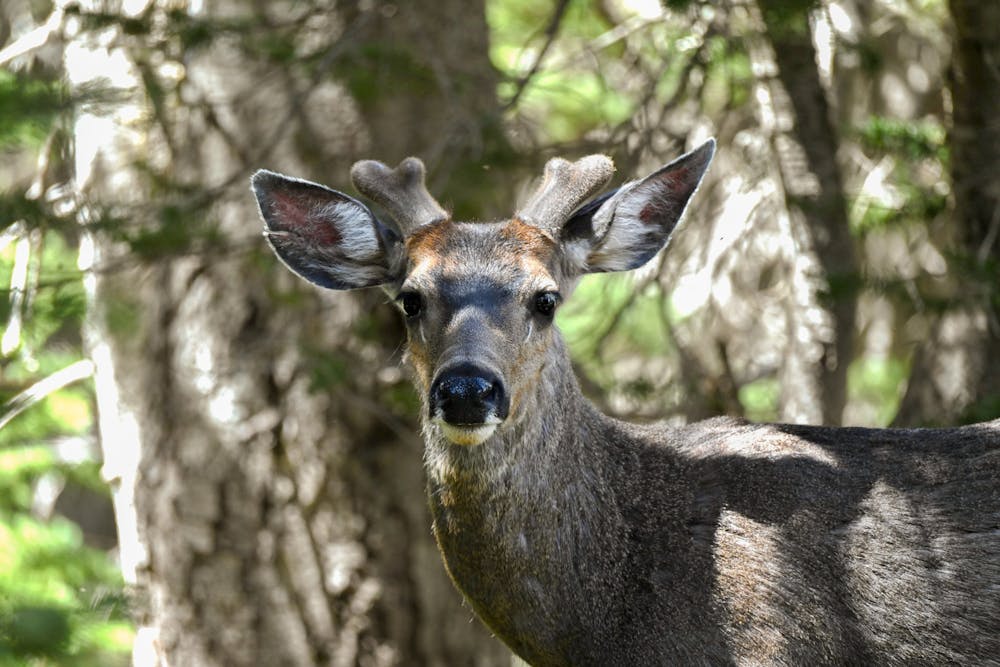An unexpected part of the Miami University experience are deer. Whether it's seeing a group of them grazing outside a dorm, or stopping on Main Street to let a family cross, most students will encounter deer up-close on more than one occasion during their time at Miami.
However, these frequent experiences point to a bigger issue; an environmental crisis in the local ecosystem.
According to Miami’s natural areas field manager Nancy Feakes, an overpopulation of deer has led to the decline of local plant species. Among these are buckeye and oak trees that are unable to grow taller and replace older trees due to deer chewing them down.
“We’re missing a whole section of the natural environment,” Feakes said.
Assistant city manager Jessica Greene said the City of Oxford has also been aware of the negative impacts deer overpopulation can have on the community. She said this has been seen through evidence of vegetation damage, vehicle collisions and increased fear about tick-borne diseases.
“People have come to council to share their concerns,” Greene said. “People have submitted public comments to council. I think it’s happened throughout the past couple years, and it’s risen more and more to the front of mind for city council.”
Both Miami and Oxford have attempted to control populations through bow hunting programs in recent years. In each program, selected hunters are assigned parcels of land on which they are allowed to hunt.
Retired pastor Sonny Hurd has spent his time in recent years hoping to help maintain Miami’s natural areas through the program. Last year, he hunted with his grandson who brought home a deer. More recently, Hurd has been working to remove invasive honeysuckle from hunting areas to improve visibility for the upcoming hunting season.
“Anything I can do to help, I want to try to do it,” Hurd said.
Over 100 potential hunters have applied to be part of Miami’s upcoming fourth year of deer management. Fifty one hunters will be chosen in a lottery selection to facilitate hunting in 17 parcels across Miami’s natural areas. Deer harvests can be used by the hunters, donated through an Ohio program or given to the Myaamia tribe to be used in ceremonies and for making hides.
Feakes said so many hunters value the program and want to participate because it provides them with their own hunting space and cuts the expense of obtaining a hunting license.
“We have your own little private hunting reserve for that period,” Feakes said. “You’re the only hunter out there. That means a lot to them.”
Enjoy what you're reading?
Signup for our newsletter
Hurd said he has enjoyed being a part of the program and hopes to be a part of this year's hunt along with his grandson; they enjoy the recreation of hunting while protecting the parks at the same time.
“It was great,” Hurd said. “Any time you get to spend with your grandchildren is a blessing, and he loves to hunt. And so, it was quite an experience for us.”
Oxford has implemented a similar bow hunting deer management program in the past, but is looking to improve their methods and research new ones. Improvements to the current program being implemented include making it easier for hunters to apply, rotating them throughout the season and allowing them to keep their harvests.
The city is also researching a new management method, which would involve a contract with professional population control company White Buffalo, which carries out deer euthanasia through sharpshooting.
“If it’s needed and we implement it, I think we hope for a healthier population of deer in our community,” Green said, “which would lead to fewer vehicle collisions, fewer concerns about vegetation damage and fewer concerns about tick borne disease.”
A survey will be conducted in November to confirm deer population numbers and guide the city’s next steps.




